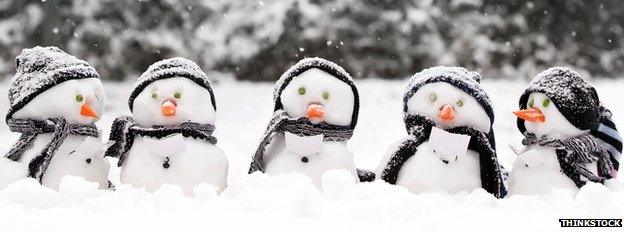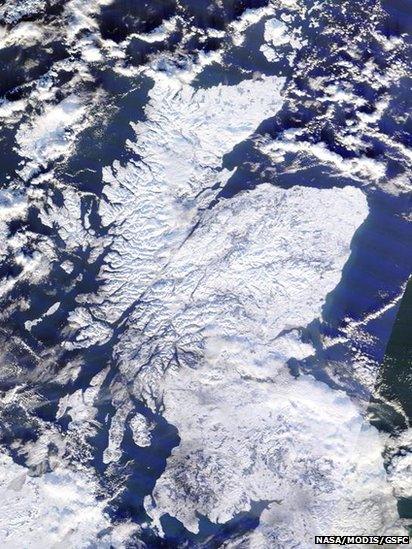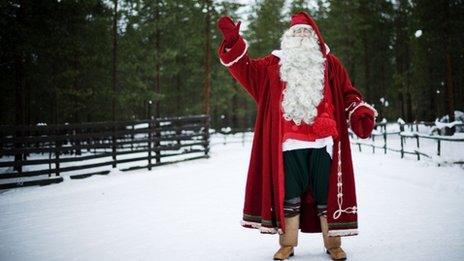Winter wonderland: Seven things about Scottish winters
- Published

What makes the best conditions for building a snowman and which factors influence Scottish winters.
Dr Eddie Graham is a lecturer and meteorologist at the University of the Highlands and Islands' Lews Castle College in Stornoway.
In recent years he has plotted the mostly likely places to get a white Christmas.

1. Scotland's snowiest places: It is from the north that Scotland usually gets its snowiest and coldest weather.
Initially, the best places to find snow are Caithness, Sutherland, around the Moray Firth and northern Aberdeenshire.
For sustained and lengthy periods of snow across all of Scotland, the ideal conditions would involve a blast of frigid air directly from the Arctic containing heavy snow showers within a "polar low", followed by several days of fine, freezing weather as a cold anticyclone becomes established.
We saw conditions just like this during Christmas 1995 and again at Christmas 2010.

Satellite image of Scotland at Christmas 2010
2. When the wind blows from the east: Easterly winds from Siberia are less likely to develop early in the winter, but in the past they have brought substantial snowfalls to east-facing coasts and hills - especially across the Borders and rural Aberdeenshire - for example at Christmas 1996.
3. When the wind blows from the west: Westerly winds can also bring snow occasionally, but it usually does not last for long at sea-level, and tends to be slushy in nature.
4. Height matters: The chance of snow increases markedly with altitude in Scotland, almost regardless of how little snow there has been near sea-level.
So if you are desperate to throw a snowball or just touch the white stuff, make a beeline for a Corbett, which are hills above 2,500ft, or if suitably experienced and equipped, a Munro, which are mountains 3,000ft and higher. You are almost guaranteed to see some snow.
5. Watch weather forecasts: Look for hesitant, wavering fronts advancing slowly from the south-west - if deep, cold air has become established over Scotland, for example, during an extended period of high pressure with frosty conditions, a slowly advancing Atlantic frontal system can potentially bring very heavy snowfalls on its progress north-eastwards.
6. Don't watch weather forecasts: Can you predict snow or icy conditions at home without watching a weather forecast? Yes, certainly.
Make sure that you have a thermometer. Put it in a sheltered place outside away from direct sunlight or sources of heat and watch the barometer and the wind direction too.
If the air pressure and temperature are both low and the wind swings into the north-west, north or north-east, then the chance of snow is definitely increasing.
7. Want to build a snowman?: The best conditions for making a snowman are not to be found during coldest weather, but when the air temperature is near freezing-point or even slightly above.
This is because snow sticks best when there is a little water present. So roll your snowballs at the warmest time of the day.
Powder snow, on the other hand, is much more likely at sub-zero temperatures, typically below -3C, right down to sub double-digits degrees Celcius. These make the best conditions for skiing, especially off-piste.
- Published20 December 2013

- Published19 December 2011
